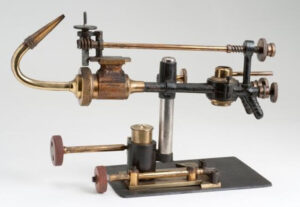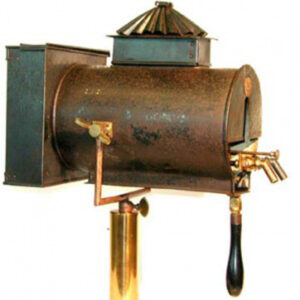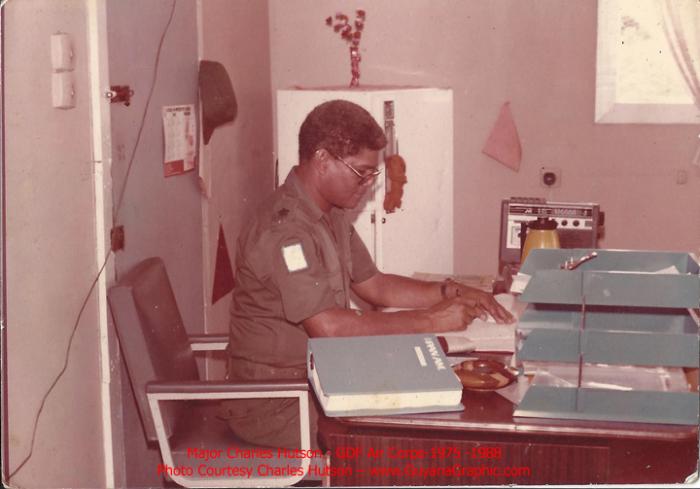
The origin of “in the limelight,” which refers to being the focus of public attention, is linked to a type of stage lighting that was popular in the 19th century. The “lime” in limelight is a chemical compound, calcium oxide, also known as quicklime. In the early 1820s, English inventor Goldsworthy Gurney, improving on the work of earlier scientists, developed a blowpipe that burned hydrogen and oxygen to create an extremely hot flame. When Gurney heated calcium oxide in the flame it produced an intense white light, dubbed limelight. A Scottish military engineer, Thomas Drummond, learned about Gurney’s work and around the mid-1820s devised the first practical use for limelight, as a surveyor’s tool. When landmarks and reference points were lit with Drummond’s bright light they could be observed from great distances by surveyors, enabling far more accurate measurement-making.
Limelight was first used in a public theater in 1837, where the technology was employed at Covent Garden in London. By the 1860s, the use of limelights in theaters was widespread. Before this, theaters were typically lit by gas lights which were particularly dim; to make up for it, hundreds of gaslights were used to light a theater.

One of the drawbacks of using limelights was that someone had to tend to them at all times, adjusting the block of limestone and checking the oxygen and hydrogen cylinders fueling the flames. Additionally, this type of lighting proved to be a fire hazard.
During the second half of the 19th century, theaters regularly utilized this powerful form of light, which could be focused into a beam to spotlight specific actors or an area of the stage, as well as create special effects such as sunlight or moonlight. In 1879, Thomas Edison demonstrated the first practical electric light bulb and by the end of the 19th century, most theaters had switched from limelight to electricity, which was safer and more economical. Nevertheless, this development didn’t signal lights out for “in the limelight,” which remains a common expression.
By the end of the 19th century, electric lights were starting to be used and limelight fell out of favor. However, it’s easy to see how the expression came about; limelight was used at the front and center of the stage, meaning a person standing in the limelight would be the center of attention. Despite theaters moving to electric lights, “limelight” remained the way to describe someone who was front and center.





